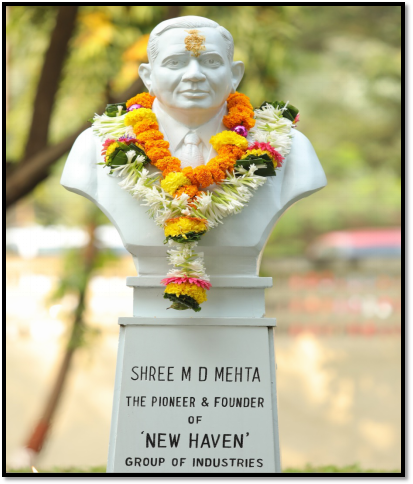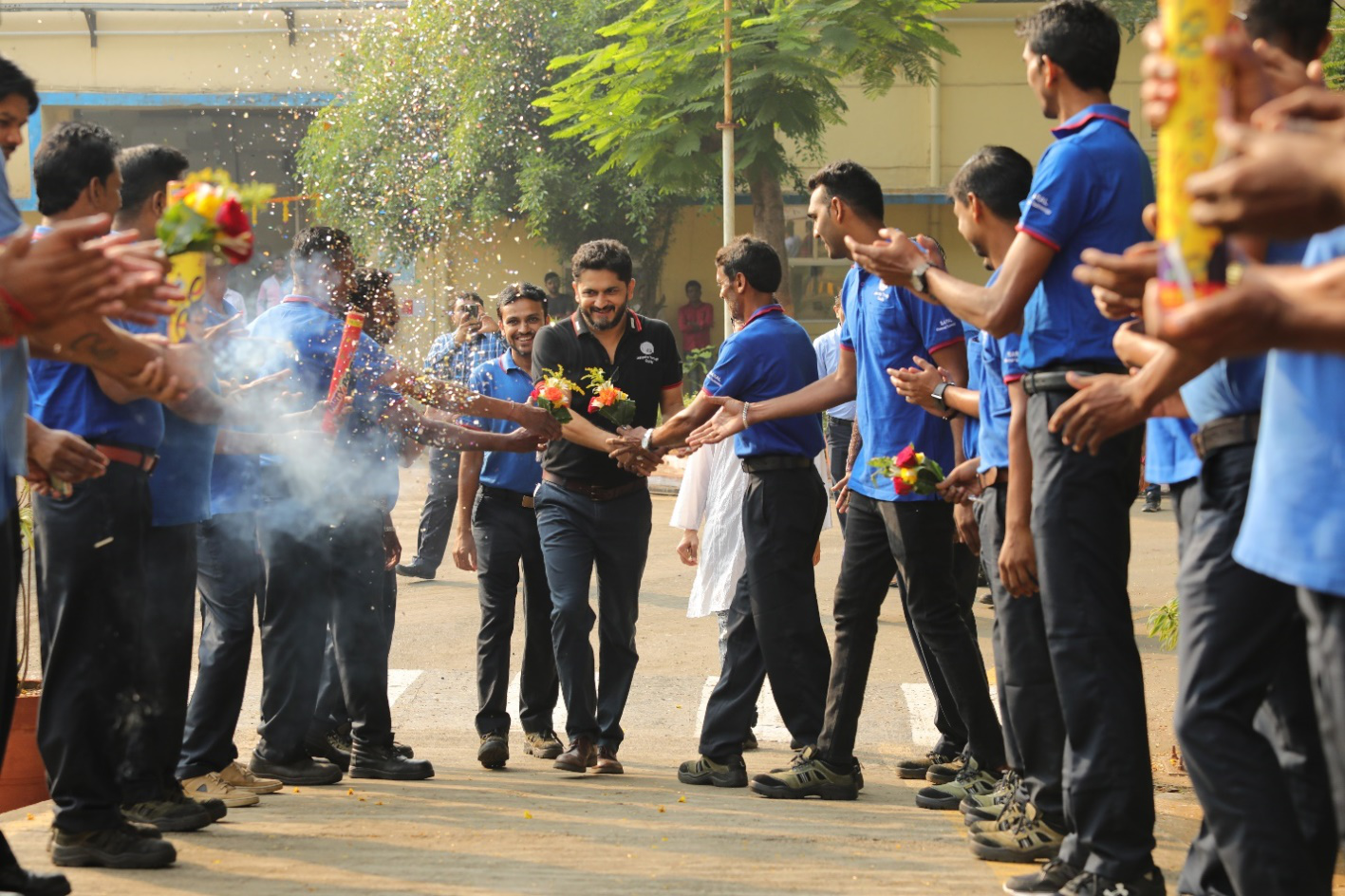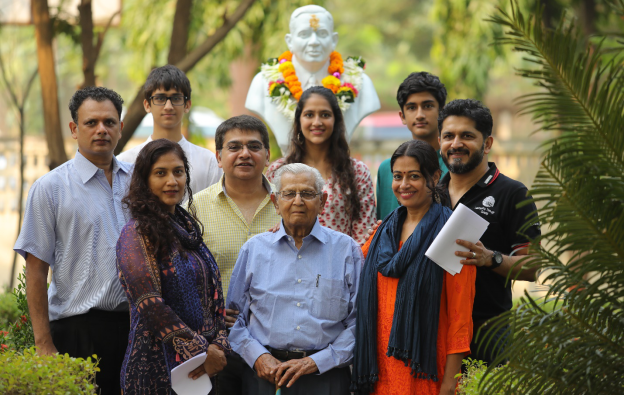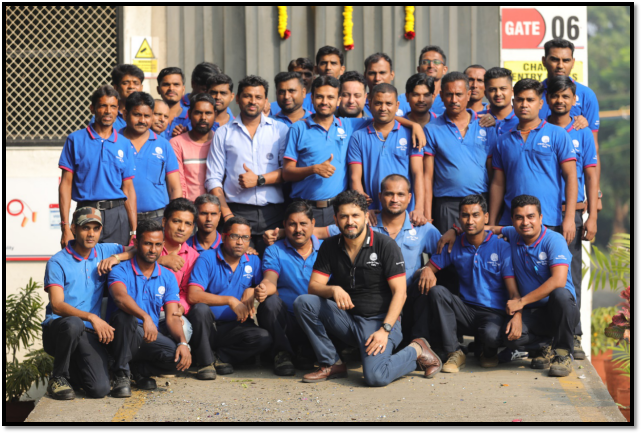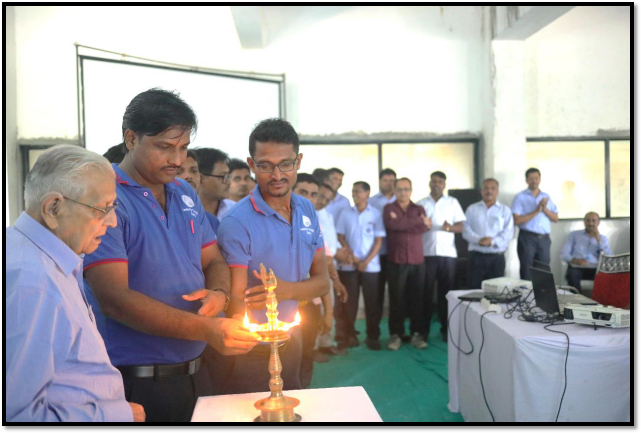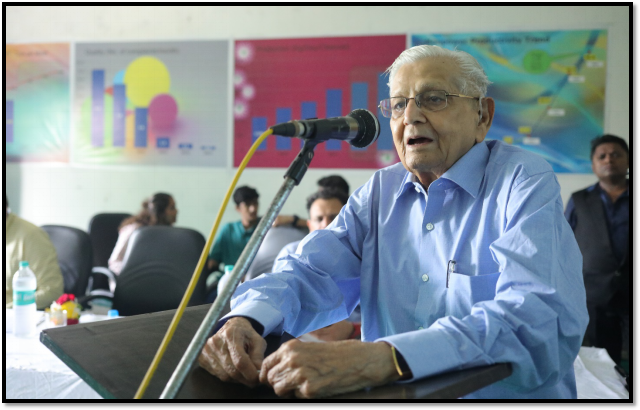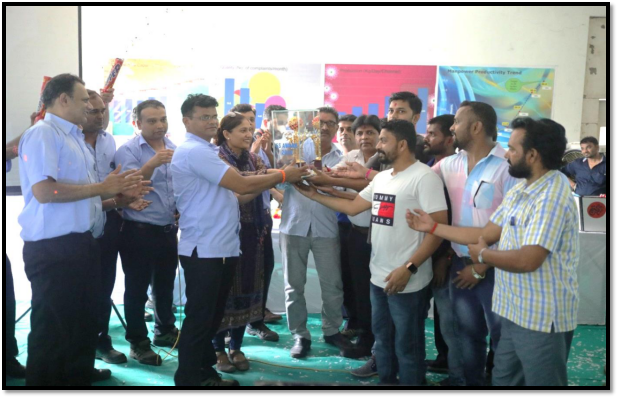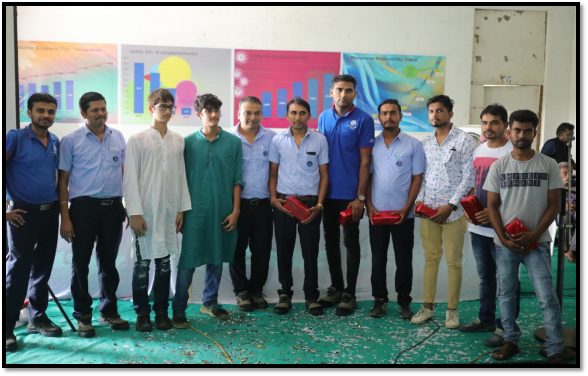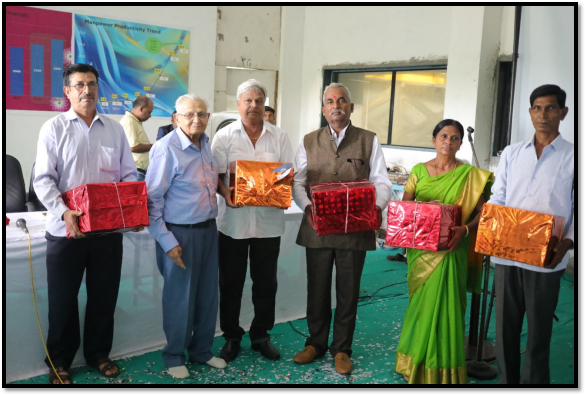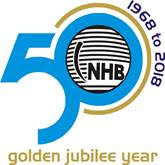
Formats:
NHB Celebrated 50 years
By Manish Chauhan
18th, October 2018
Description :
NHB Celebrated 50 years of Steel ball establishment on auspicious day of Dussehra, 18th October 2018. It all started in the year 1968 on Dussehra day in INDIA, State of Gujarat in Amalsad village, which has a nice and warmth ambiance, such as ponds, different colored lotuses and greenery, in short it is like heaven.

Formats :
Super Premium Quality Ball Bearing
By Mr. Lakshminayayana
2nd, April 2018
Description :-
The real heart of a ball bearing is represented by the balls themselves, which interposed between the inner ring and the outer one, allow their motion between the parts and lead to their great perfomances and functional capacities.
In a rigid ball bearing, as well as in an angular contact one, the ball is the component with the highest precision requirements. Think about, for example, the values of superficial roughness that the precision balls should preserve to guarantee excellent performances. In the best products, finishing operation is so highly pushed to achieve up to Ra values of 0.004 micron, the equivalent of the thickness of a layer of a few hundred thousand atoms laid upon one on other. To develop an understanding of values in relative terms, it is to be considered that the grooves, on which the balls themselves will roll, have , in the best cases, roughness at least 4 or 5 times higher.
Even in terms of accuracy of form, the values achieved by the best ball bearings are impressive. The ISO 3290 Standard (see separate box) defines the accuracy classes of the balls and correlates them to maximum ovality values for each class. The G10 class balls, which means a reasonable quality, have an ovality tolerance of 0.25 micron, whatever is the diameter of the ball in question. Many are the balls manufacturers, which claim G10 quality for their products, but probably only 50% of them are able to produce in total agreement with the standard. Few ones are, instead, those able to produce consistently and repetitively (with Cpk> 1.66) G5 quality (0.13 micron max of ovality), probably estimated in 3 or 4 companies worldwide, even less are those able to offer G3 quality ( 0.08 micron max of ovality).
The ISO 3290 Standard does not define all the balls product features, which could potentially impact on the performance of the bearing and / or of the final application. Many of these properties are exclusively entrusted to the awareness and know-how of the manufacturer. Let us think, purely by way of example, of the metallurgical characteristics of steel such as microstructure, hardness and residual stresses, or to the degree of cleaning of the balls measured both in qualitative and quantitative terms. This is why balls, which formally conform to the same level as the ISO 3290 standard, can actually have completely different results in application.
In addition to the above, the use of "clean" steel, i.e. free of metal and non-metallic inclusions of different kinds, is a further guarantee of strength to fatigue and wear of the ball bearing (this prevents unfortunate early spalling of the balls and, as chain reaction, of the rings’ groove) as well as of silent performances: often, in fact, the micro and macro-inclusions of the steel, if they arrive closed to the ball’s surface, come off suddenly because of their fragility, leaving dangerous pin holes which can then result in intermittent "peaks" of bearing noise.
It is no coincidence that from the imperfect geometric shape and from a wrong metallurgy of the steel balls of a bearings batch can depend even more than 50% of the waste in a ball bearings assembly line, with high impact on the manufacturer's costs. On another point of view, it can be underlined how the use of high quality precision balls can bring enormous benefits both in terms of reducing manufacturing costs (less waste, less reworking, higher production flow, higher product quality) and in the sense of improving the bearing ‘s performance during use (longer life under the same conditions or the possibility of downsizing the bearing for the same application, with relative competitive advantages for both the bearing manufacturer and the final customer).
Notwithstanding the foregoing, there is still a badly concealed tendency to consider balls bearing as a commodity, indeed as a product in which the only differentiating element is the purchase price rather than the intrinsic product’s features. This is also why the average quality of DGBB (Deep Groove Ball Bearings) and ACBB (Angular Contact Ball Bearings) in circulation - both for OEM and after-market - has definitely collapsed in the last 20 years, with obvious consequences on the quality of final applications. This is how many have abandoned themselves in the unsafe embrace of suppliers of presumed G10 quality balls, produced with GCr15 steel of unknown origin and of uncertain purity, faithful to the motto "the more it is cheaper, the better it is".
In most cases, however, even a true G10 level is not able to grant acceptable bearing quality, especially in terms of vibration and noise in application. In some cases neither the G5 quality can guarantee the correct performance of the ball bearing. More specifically, an excessively high balls’ ovality will impact above all on the middle bandwidth (300 – 1800 Hz) of the ball bearing vibration. This vibration, measured with the speed signal method (micron/sec) on ball bearings placed in rotation with a speed between 700 and 1400 revolutions per minute, will result in the ball bearing ‘s charateristic background noise, which the operators often refer to with the name of “tone “ and that can be particularly annoying for sensitive applications such as, for example, the office and civil houses air conditioning systems or the cars’ generator or the high-speed spindles of industrial machines.
Keeping this in mind the Indian Company NHB Ball & Roller LTD has recently launched a new class of chrome steel balls 100Cr6. These are Super-Premium balls, of a better class than the G3 quality. The ISO 3290 standard points out this last as currently the best existing one.
As the CEO of the Indian company eng. Kalpesh Mehta explains, “Super-Premium balls have been developed thanks to the company extended implemantation of a Premium philosophy that is based on the standardization towards the extreme quality of every little part of the production process, on the refusal of any compromise of any nature and on the exasperated research for excellence”.
“In the last five years”, adds the engineer, “our company has been the main protagonist of a radical transformation of its own philosophy, which has led us to overturn our manucfacturing and administrative processes with the aim of simplifying and streamlining them and drastically raising their level quality and repeatability. This, together with the use of innovative and unique lapping and product control technologies, has brought us to the definition of Super- Premium quality”
Currently the Indian Company has developed Super- Premium technology on a limited number of balls (3.969, 4.762, 6, 7.938 e 9.525, all measures expressed in mm), but by 2018 end the intention is to extend it at least to all variants below 10 mm diameter.
The principle that the ball can make a big difference in many of the applications in which it is used (from the bearing to the velocity joint, to name only two of the hundreds existing) is also exlpained by Giuseppe Panaccione, an Italian engineer who holds the position of Vice President and Business Development Manager of NHB.
“We have recently developed the notion of NHB Inside to underline the message of the great contribution that a quality ball like ours can give in many applications, to improve performance and reduce the indirect costs associated with the product and the final application. For this reason we are encouraging our customers to use our NHB inside logo on their finished products, as a communication tool and affirmation of a higher quality . For example, it is with this logic that we produce ball bearings exclusively using chrome steel with high purity and supplied only from one of the most renowned steel companies in the world: Daido and Kobe in Japan, Ascometal in France and Posco in Korea”
“The challange of the next 3-5 years – concludes eng. Panaccione - will be to extend these concepts more and more in the many different applications we supply, from the world of bearings to the cosmetic industry, from industrial machines to the automotive field”.
NHB Ball & Roller Ltd
NHB Ball & Roller (www.nhbball.com) is a Company headquartered in Mumbai with two modern production plants located in Gujarat. Their production consists of balls in chrome steel and in various kind of stainless steels, as well as in aluminium, in the size range from 2 to 27 mm in diameter, supplying the world market with a just-in- time policy throughout nine warehouses also located in Italy, Germany and Canada, as well as in India. The company has 320 employees, with an annual turnover of about 30 million dollars.
Balls quality grades – ISO 3290 Standard and new Super- Premium NHB quality
The ISO 3290 Standard establishes the balls geometric precision tolerances used in the bearing industry. The degree of quality is expressed with the letter G followed by a number representing the millionths of an inch of the variation tolerance of the ball’s diameter, i.e. ovality. G10 grade, for example, has a maximum ovality tolerance equal to ten millionths of an inch, therefore 0.25 micron. As consequence the smaller the number following the letter G is, the greater results the geometric quality of the balls.
The ISO 3290 Standard establishes the balls geometric precision tolerances used in the bearing industry. The degree of quality is expressed with the letter G followed by a number representing the millionths of an inch of the variation tolerance of the ball’s diameter, i.e. ovality. G10 grade, for example, has a maximum ovality tolerance equal to ten millionths of an inch, therefore 0.25 micron. As consequence the smaller the number following the letter G is, the greater results the geometric quality of the balls.
The Super- Premium quality introduced by NHB & Roller has ovality values better than the G3 tolerance. In addition, the balls’ geometry is classified by adding many restrective parameters of waviness measured through the analysis at different frequencies of a speed signal (micron/ sec.). The measurement takes place thanks to a special sensor, below it the ball slowly rotates along a given circumference. Thanks to this kind of analysis NBH can find out minimal geometric imperfections and eventually correct them in the process before final product release.
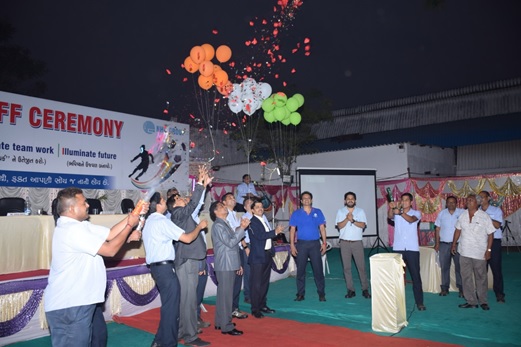
Formats :
TPM Club of India Magazine:
By Sasi Kumar
December 2017
About NHB Plant :
Established in 1969, NHB is one of the leading manufacturers of Chrome, Stainless, Brass & Aluminum balls in India and regular supplier to prominent companies all over the globe: USA, Canada, Europe and the Asia - Pacific region. The company has a strong focus to achieve leadership through Quality, innovative and sustainable products.
Supplying to Multinational Bearing, Automotive & Cosmetic industry in 20 Countries.
Expectation from TPM:
- To achieve and sustain Zero Accident, Zero Breakdown & Zero Defects in all areas
- High Productivity
- Reduce the losses by 30%
- Increase in Employee Ownership
- Involvement of Employees in continual Improvements
- Upgrade over all skill level and empowerment of employees & Multiskilling of them
- Improve 5S to make visible shop floor
Production Improved by 15%, Breakdown reduced by 10%, 1257 of Kaizens Implemented, Zero Accidents, Training Man-hours increased, Customer complaint & In-house rejections reduced drastically.
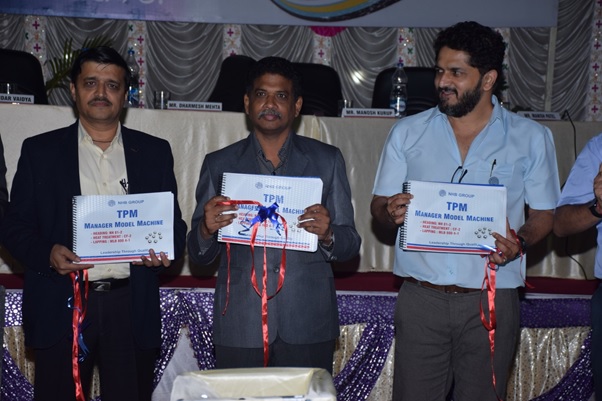
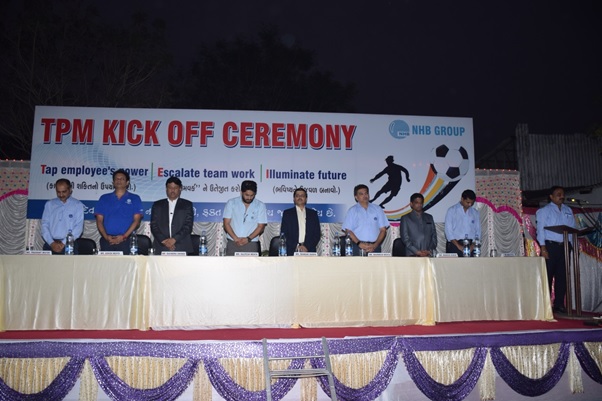


 .docx
.docx
